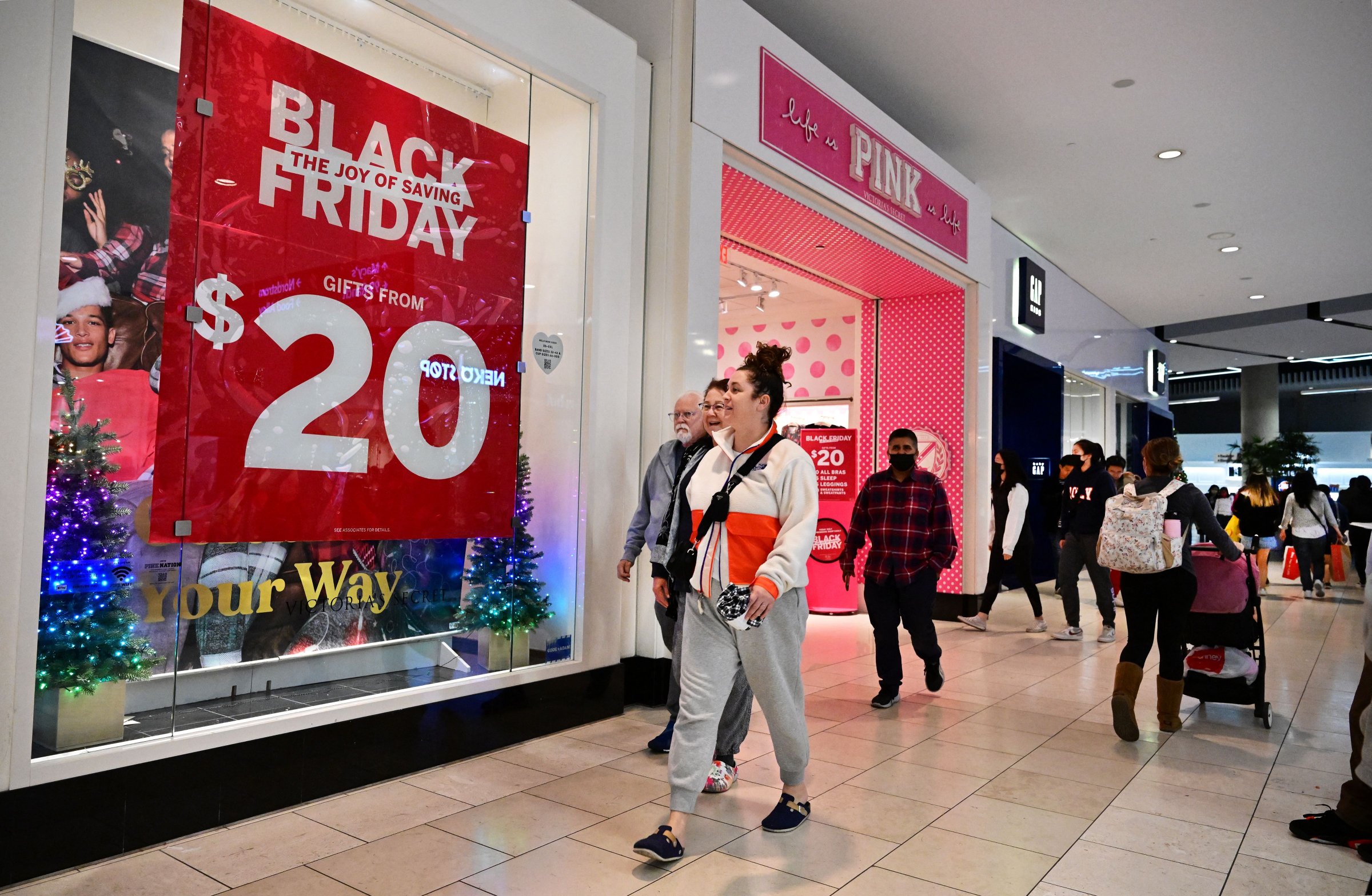
Holiday shoppers are sending a message to retailers: Lower your prices.
U.S. shoppers pulled back on spending just as the holiday season began, a sign that high prices and rising interest rates are shifting consumer spending habits.
Retail sales fell in November by 0.6%, the biggest drop in nearly a year, after rising 1.3% in October, the Commerce Department said on Thursday. The drop reverses a traditional annual pattern wherein consumers ramp up spending in November to take advantage of Black Friday and Cyber Monday deals.
Shoppers spent less on electronics, furniture, clothing, and sporting goods—both online and at department stores. Spending did increase in some areas, including at food and beverage retailers and health and personal care stores. But the data shows that Americans are being more selective about what they buy.
“Consumers are very hesitant to pay full price this year,” says Ted Rossman, a senior industry analyst at Bankrate. “This is perhaps the strongest evidence yet that consumers are pulling back, and it comes at a critical time of year for retailers.”
Although inflation is starting to ease, consumers are still seeing high prices almost everywhere. The Labor Department said this week that prices rose 7.1% in November from the same month a year before, slowing from 9.1% in June, which was the highest in four decades. Many economists believe retailers need to aggressively lower their prices in order to incentivize consumers to spend.
“The most important takeaway from this report is that if retailers do not bring prices down, more than what they have done so far, they might not be able to sell as many goods as they want,” says Eugenio Alemán, chief economist at Raymond James. “My guess is that they are going to discount goods in December at a larger rate than last year and that will produce a better holiday retail season.”
The consumer pullback raises fears that the Federal Reserve’s relentless campaign to curb inflation with a series of interest rate hikes is tipping the economy into a recession. The central bank said this week that it will continue hiking rates through 2023.
Markets reacted to the consumer pullback and the Fed’s decision to raise interest rates, as stocks fell sharply on Thursday: The Dow Jones Industrial Average dropped 763 points, or 2.25%, the S&P 500 lost 2.48%, and the Nasdaq Composite fell 3.23%. It was the worst day for the Dow Jones since September as investors fear a recession is looming, during which economic output, employment and consumer spending typically drop.
Read more: A Recession Is Widely Expected. Here’s How to Prepare
The drop in November spending is particularly worrisome for retailers that thrive on holiday shopping or sell a wide range of goods. Costco Wholesale Corp. said last week that sales growth slowed slightly in the most recent quarter as shoppers cut back on big-ticket discretionary items. At Walmart and Target, executives have said that shoppers are being more selective about what they take home, giving priority to spending on food and other necessities and forgoing spending on electronics and furniture.
This past Thanksgiving weekend, which included Black Friday and Cyber Monday, nearly 200 million Americans shopped in stores or online, according to the National Retail Federation (NRF), an industry trade group. Shoppers spent an average of $325 during that span, up 8% from last year.
Claire Tassin, a retail and e-commerce analyst at Morning Consult, says more shoppers are choosing to give gift cards and apparel this holiday season in order to keep their spending within budget. “There’s kind of a practical bent to what people are gifting this year,” she says, adding that retailers started announcing discounts and promotions in October, well before Black Friday.
Still, analysts are divided over what consumer spending will look like in December, when retailers try to entice last-minute shoppers to purchase holiday gifts. NRF Chief Economist Jack Kleinhenz says consumers are doing a decent job dealing with the higher inflation, and he expects spending will rebound around Christmas time.
“Our expectation is that there will be an even higher number of people shopping [this December] compared to a year ago,” Kleinhenz says. “Christmas doesn’t fall until Sunday this year so you’ve got the weekend and a full five, possibly six days, of shopping ahead of you.”
More Must-Reads from TIME
- Cybersecurity Experts Are Sounding the Alarm on DOGE
- Meet the 2025 Women of the Year
- The Harsh Truth About Disability Inclusion
- Why Do More Young Adults Have Cancer?
- Colman Domingo Leads With Radical Love
- How to Get Better at Doing Things Alone
- Michelle Zauner Stares Down the Darkness
Write to Nik Popli at nik.popli@time.com